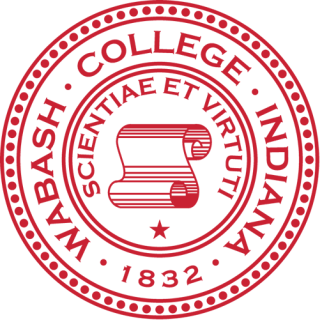
Wabash College is a private liberal arts men's college in Crawfordsville, Indiana. Founded in 1832 by several Dartmouth College graduates and Midwestern leaders, it enrolls nearly 900 students. The college offers an undergraduate liberal arts curriculum in three academic divisions with 39 majors.

Delta Sigma Phi (ΔΣΦ), commonly known as Delta Sig or D Sig, is a fraternity established in 1899 at The City College of New York (CCNY). It was the first fraternity to be founded on the basis of religious and ethnic acceptance. It is also one of three fraternities founded at CCNY. Delta Sigma Phi is also a charter member of the North American Interfraternity Conference. The fraternity's national headquarters are located in Indianapolis, Indiana, at the Fairbanks Mansion, the former home of Charles Warren Fairbanks, the U.S. vice president under Theodore Roosevelt.

Hazing, initiation,beasting, bastardisation, ragging or deposition refers to any activity expected of someone in joining or participating in a group that humiliates, degrades, abuses, or endangers them regardless of a person's willingness to participate.

Psi Upsilon (ΨΥ), commonly known as Psi U, is a North American fraternity, founded at Union College on November 24, 1833. The fraternity reports 50 chapters at colleges and universities throughout North America, some of which are inactive.

Alpha Gamma Delta (ΑΓΔ), also known as Alpha Gam, is an international women's fraternity and social organization. It was founded on May 30, 1904, by eleven female students at Syracuse University in Syracuse, New York, making it the youngest member of the Syracuse Triad of North American social sororities, along with Gamma Phi Beta and Alpha Phi. Since then, Alpha Gamma Delta has, as of December 2021 initiated over 201,000 members and has 199 installed collegiate chapters and more than 250 alumnae groups.

Sigma Chi (ΣΧ) International Fraternity is one of the largest North American fraternal literary societies. The fraternity has 244 active (undergraduate) chapters and 152 alumni chapters across the United States and Canada and has initiated more than 350,000 members. The fraternity was founded on June 28, 1855, at Miami University in Oxford, Ohio, by members who split from the Delta Kappa Epsilon fraternity.

Alpha Sigma Phi (ΑΣΦ), commonly known as Alpha Sig, is a collegiate men's social fraternity with 181 active chapters and provisional chapters. Founded at Yale in 1845, it is the 10th oldest Greek letter fraternity in the United States.

Husson University is a private university in Bangor, Maine. It offers undergraduate and graduate degrees and as of Fall 2020 had a total enrollment of 3,476 students, including 799 graduate students in master's and doctoral programs.

Delta Tau Delta (ΔΤΔ) is a United States-based international Greek letter college fraternity. Delta Tau Delta was founded at Bethany College, Bethany, Virginia, in 1858. The fraternity currently has around 130 collegiate chapters and colonies nationwide, with an estimated 10,000 undergraduate members and over 170,000 lifetime members. Delta Tau Delta is informally referred to as "DTD" or "Delt."
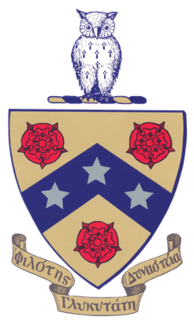
Phi Gamma Delta (ΦΓΔ), commonly known as Fiji, is a social fraternity with more than 144 active chapters and 10 colonies across the United States and Canada. It was founded at Jefferson College, Pennsylvania, in 1848. Along with Phi Kappa Psi, Phi Gamma Delta forms a half of the Jefferson Duo. Since its founding in 1848, the fraternity has initiated more than 196,000 brothers. The nickname FIJI is used commonly by the fraternity due to Phi Gamma Delta bylaws that limit the use of the Greek letters.
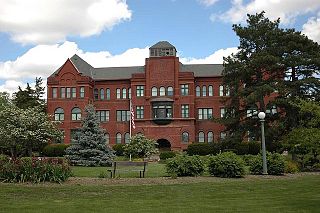
Nebraska Wesleyan University (NWU) is a private Methodist-affiliated university in Lincoln, Nebraska. It was founded in 1887 by Nebraska Methodists. As of 2017, it has approximately 2,100 students including 1,500 full-time students and 300 faculty and staff. The school teaches in the tradition of a liberal arts college education. The university has 119 undergraduate majors, minors, and pre-professional programs in addition to three graduate programs.
Cornelliana is anything related to Cornell University's unique traditions, legends, and lore.

QEBH is a senior honor society at the University of Missouri. Founded in 1898, it is the oldest of six recognized secret honor societies that participate in the annual tradition of Tap Day on campus.
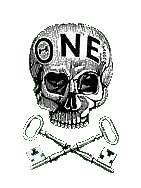
Theta Nu Epsilon is a sophomore class society. Founded at Wesleyan University in 1870 as a chapter of Skull and Bones, the society accepts members regardless of their fraternity status.
There are many collegiate secret societies in North America. They vary greatly in their level of secrecy and the degree of independence from their universities. A collegiate secret society makes significant effort to keep affairs, membership rolls, signs of recognition, initiation, or other aspects secret from the public.
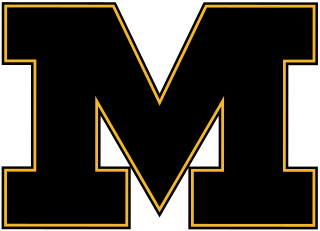
The Missouri–Nebraska football rivalry was an American college football rivalry between the Missouri Tigers and Nebraska Cornhuskers. The rivalry was the second oldest in the Big 12 Conference and third oldest west of the Mississippi River. However, it ended following the 2010 game, when Nebraska and Missouri met in league play for the last time prior to Nebraska's 2011 move to the Big Ten Conference. In November 2011, Missouri announced that it would join the Southeastern Conference in July 2012.
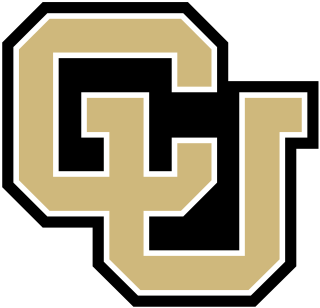
The Colorado–Nebraska football rivalry is an American college football rivalry between the Colorado Buffaloes and Nebraska Cornhuskers. The teams first played in 1898, and began competing annually as conference opponents in 1948. The rivalry intensified in the 1980s as Colorado improved under head coach Bill McCartney, reaching its peak in the 1990s with several top-ten meetings. Conference realignment placed the teams in the same division, where they continued to meet annually through 2010, after which Colorado moved to the Pac-10 and Nebraska moved to the Big Ten.
Alfred Clarence Pete Nelson was born in Salt Lake City, Utah on November 14, 1898. At the age of two, his family moved to Denver, Colorado. Nelson graduated from Denver's South High School in 1916. He received the nickname Pete while playing football in high school after a University of Colorado football player whose name was Pete Nelson. At the University of Denver Nelson earned both his bachelor's and master's degrees. After two years of graduate study at the University of Illinois, he returned to the University of Denver as an associate professor of chemistry. In 1926, Nelson earned his Doctorate of Philosophy from the University of Illinois. Throughout his career at the University of Denver, Nelson held many positions. He began his career as an assistant professor in 1923 and served as interim chancellor in 1948. He was well liked by the students and faculty. A writer for the Denver Post dubbed him The Affable 'Mr. Chips' of Denver University in a profile. He received numerous awards throughout his career at the university, including the Kappa Delta Pi fraternity Honor Award for Service in Education (1963), University of Denver College of Engineering Distinguished Faculty Award (1963) and the Evans Award from the University of Denver Alumni Association (1971). The University of Denver awarded the honorary LLD degree to him in 1964. In addition to the various boards he served on in the community, Nelson was a member of many educational associations. The organizations include American Institute of Chemists, Fellow; American Association for the Advancement of Science, Fellow; American Chemical Society; Colorado Schoolmasters Club; Phi Beta Kappa; Phi Delta Kappa; Kappa Delta Pi; Alpha Chi Sigma and Phi Lambda Upsilon. Nelson was a member of the first pledge class of the Alpha Pi chapter of Lambda Chi Alpha.















